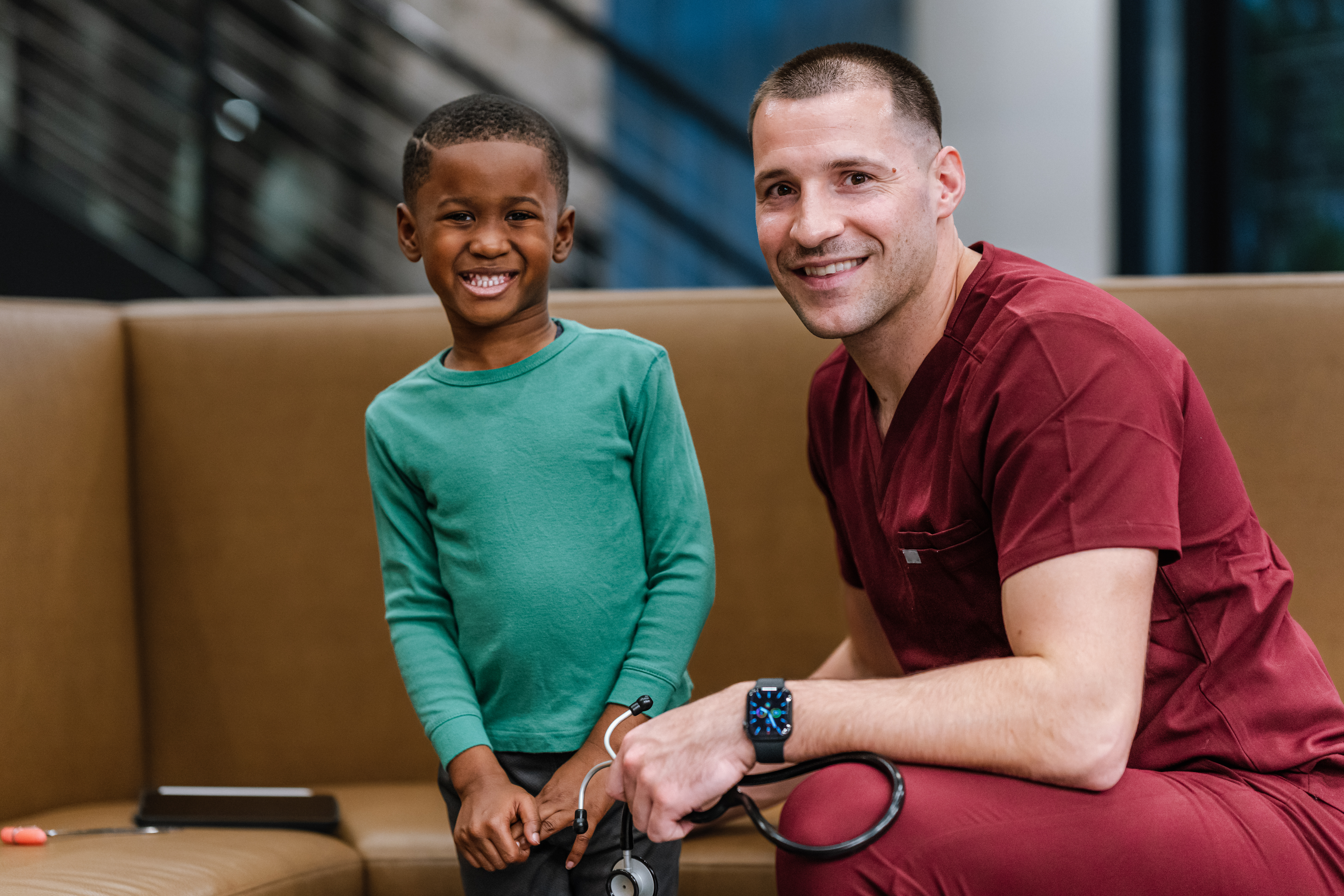Trauma. It’s one word you never want associated with children.
Yet, we live in a world where children are exposed to so many kinds of trauma: abuse, violence, neglect, family dysfunction, racial injustice and poverty. In fact, serious and chronic childhood trauma is so common that about two-thirds of adults in the U.S. have experienced at least some form of trauma, according to the Adverse Childhood Experiences Study (ACE Study).
The ACE Study, conducted by the Centers for Disease Control and Kaiser Permanente, is one of the largest investigations ever conducted to assess associations between childhood maltreatment and later-life health and well-being. The findings from the study (which is ongoing) suggest that people who suffered childhood trauma are much more likely to have chronic health problems and engage in risky behavior later in life.
Trauma-informed care (TIC) is the recognition that emotional and physical trauma has a serious impact on our lives. Recently, 14 community health centers around the U.S. began piloting new approaches to see if screening and then treating people for trauma can improve the treatment results for their chronic conditions.
The Trauma-Informed Primary Care Initiative, which is being conducted by the National Council for Behavioral Health, involves a group of 2,500 mental health and treatment organizations. The project, funded by Kaiser Permanente, is a unique and critical opportunity to connect medical care with mental health care.
It’s also an opportunity build awareness of TIC and let people know what they can do to better address the relationship between trauma and long-term health. And it’s particularly critical to engage schools.
The Role of Schools
Children with a history of trauma are more likely to do poorly in school and have chronic health conditions as adults.
“Outside of the home, schools are the largest part of a child’s social environment,” said Shelley Hitzel, senior case coordinator, Child Advocacy Center of Niagara. “Therefore they are in a unique position to provide children with an ongoing stable, safe, supportive, and trustworthy environment that fosters positive post-traumatic adjustment and mitigates the lasting impact of adverse childhood experiences.”
Hitzel is also an intern for The Institute on Trauma and Trauma-Informed Care (ITTIC) at the State University of New York at Buffalo. ITTIC is providing research and training for organizations regarding trauma and trauma-informed care.
Hitzel was recently part of a tweet chat on TIC hosted by the National Council to share her own knowledge on trauma-informed care, as well as to gain insight into what others are doing to promote TIC approaches.
“Children exposed to trauma express a wide range of issues resulting from behavioral and emotional dysregulation,” said Hitzel. Examples include aggression and self-destructive or impulsive behaviors.
In addition, trauma affects children’s attention, processing of information, memory, and learning. Neurobiological changes in the brains of children exposed to trauma leave them in a constant state of stress in which they are highly susceptible to “triggers” in their environment.
“One thing that schools can and should be doing is training staff on the impacts of trauma in childhood, how to recognize when students are being triggered and how to react in a way that reduces re-traumatization,” said Hitzel.
Strategies for Trauma-Informed Care in Schools
There are several organizations in the school health space leading the way in advocating for trauma-informed care in schools.
For example, the UCSF Healthy Environments and Response to Trauma in Schools (HEARTS) project, a comprehensive, multilevel school-based prevention and intervention program for children who have experienced trauma, is one that can be a great resource for schools.
The goal of UCSF HEARTS is to create school environments that are more trauma-sensitive and supportive of the needs of traumatized children.
While educators sometimes see a misbehaving child as a bad kid or a mean or oppositional kid, UCSF HEARTS tries to help them to see that this is a scared kid. The child’s behavior is the result of chronic exposure to traumatic events beyond his or her control.
UCSF HEARTS offers the following strategies for teachers to help students in their classroom who have experienced complex trauma:
- Recognize that a child is going into survival mode and respond in a kind, compassionate way. When you notice that a child might be having a difficult time, start by asking yourself, “What’s happening here?” rather than “What’s wrong with this child?” This simple mental switch can help you realize that the student has been triggered into a fear response, which can take many forms.
- Create calm, predictable transitions. Transitions between activities can easily trigger a student into survival mode. Some teachers will play music, ring a meditation bell or blow a harmonica to signal it’s time to transition. The important thing is to build a routine around transitions so that children know: a) what the transition is going to look like, b) what they’re supposed to be doing, and c) what’s next.
- Praise publicly and criticize privately. For children who have experienced complex trauma, getting in trouble can sometimes mean either they or a parent will get hit. And for others, “I made a mistake” can mean “I’m entirely unlovable.” Hence, teachers need to be particularly sensitive when reprimanding these students.
- Adapt your classroom’s mindfulness practice. Mindfulness is a fabulous tool for counteracting the impact of trauma. However, it can also be threatening for children who have experienced trauma, as the practice may bring up scary and painful emotions and body sensations.
You can read more about these strategies on the Greater Good Science Center’s website.
We also invite you to explore the work of Los Angeles Education Partnership and OEA Choice Trust in Oregon.
We know that school teachers, staff and leaders have so many important issues to focus their attention on in this day and age. Consideration about the impacts of trauma on young people can feel overwhelming, another layer of complexity. But as we continue to build schools as safe places for learning, growing and thriving, it’s so important that we keep ACEs and TIC in the forefront of our minds. Otherwise, we may not be considering the full spectrum of experiences that impact the health of individuals over their lifetime.



